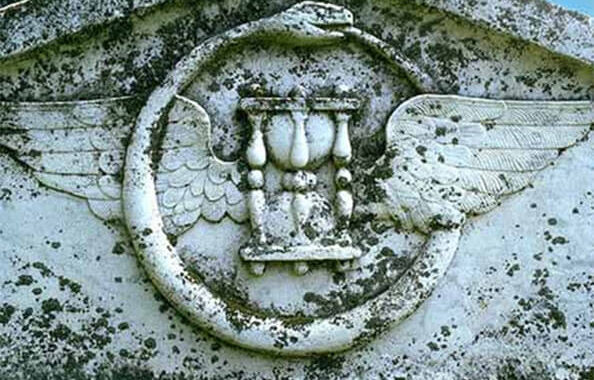Cemeteries are rich with symbolism, and one intriguing motif frequently found on gravestones is the hourglass. The hourglass, a timeless symbol, carries profound meanings related to the finite nature of life and the inevitable passage of time. In this article, we delve into the symbolism of the hourglass on gravestones and explore the various interpretations that have endured through centuries.
- Symbolic Representation of Time:
- Finite Nature of Life: The hourglass serves as a potent reminder of the finite nature of human life. The sand within the hourglass gradually flows from one chamber to another, symbolizing the inexorable march of time. This representation underscores the transient and fleeting quality of life itself.
- Mortality and Impermanence: The hourglass on a gravestone is a visual metaphor for mortality and impermanence. It communicates the idea that life, like the sands in the hourglass, is constantly slipping away, emphasizing the transient nature of our existence.
- Emphasis on Transitions and Endings:
- Life’s Phases: The hourglass, with its dual chambers, signifies the various phases of life. The sand moving from one compartment to another marks the transitions from birth to death, highlighting the cyclical and inevitable nature of life’s journey.
- Endings and Beginnings: Beyond representing the end of life, the hourglass also symbolizes new beginnings. Just as the sand runs out, a new phase or existence may begin, suggesting the cyclical nature of life and the potential for renewal.
- Remembrance of Mortality:
- Memento Mori Tradition: The hourglass is often associated with the Memento Mori tradition, a Latin phrase meaning “remember that you will die.” This tradition encourages reflection on mortality and the transient nature of life, urging individuals to live purposefully and virtuously.
- Contemplation of Life’s Meaning: The presence of an hourglass on a gravestone invites contemplation about the brevity of life and the importance of making the most of one’s time. It serves as a poignant symbol encouraging reflection on the meaning and purpose of existence.
- Historical and Cultural Contexts:
- Victorian Era Symbolism: During the Victorian era, which was characterized by elaborate mourning rituals and symbolism, the hourglass gained popularity on gravestones. The Victorians were particularly fascinated with symbols that conveyed the ephemeral nature of life, and the hourglass was embraced for its powerful representation of time’s passage.
- Puritan Gravestones: In some early American Puritan gravestones, the hourglass was used to emphasize the brevity of life and the inevitability of death. These gravestones often incorporated intricate skull and crossbones motifs alongside the hourglass.
- Interpretations Across Religions:
- Christian Symbolism: In Christian symbolism, the hourglass can be seen as a representation of the biblical concept of “ashes to ashes, dust to dust.” It underscores the transient nature of earthly life and the belief in an afterlife.
- Buddhist Symbolism: In Buddhism, the hourglass may symbolize the cyclical nature of life, death, and rebirth, aligning with the concept of samsara.
The hourglass on a gravestone is a profound and enduring symbol that transcends cultures and time periods. Its representation of time’s inexorable passage, the fleeting nature of life, and the cyclical journey from one phase to another makes it a poignant reminder for those contemplating mortality. As visitors to cemeteries encounter gravestones adorned with hourglasses, they are invited to reflect on the brevity of life and the timeless themes that unite us all in our shared human experience.

